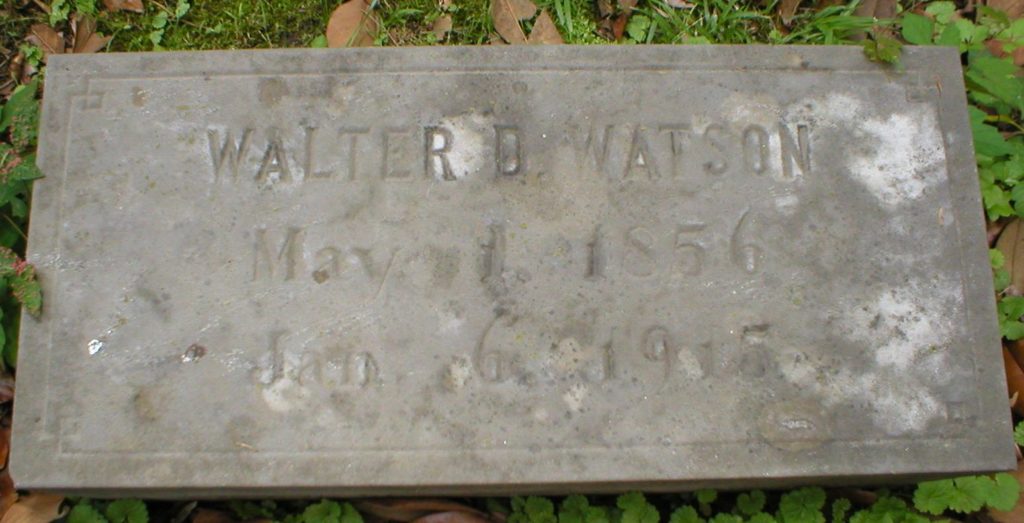
In 1897, Walter D. Watson entered into an agreement with J.L. Penn and C.T. Bethell to purchase a lot of land on Holbrook Avenue. A year later the house at 165 Holbrook Avenue was built. It was most likely constructed in the Queen Anne Style upon its completion. Later remodeling efforts converted it into a unique rendition of the Colonial Revival style, a trend which had really taken off as the only “truly American Style” by the turn of the century.
Walter Douglas Watson was born in Richmond, Virgnia on May 1, 1856, the third of seven children born to Garrett Fitzgerald and India E. Watkins Watson. Garrett Watson was a native of Dublin, Ireland.
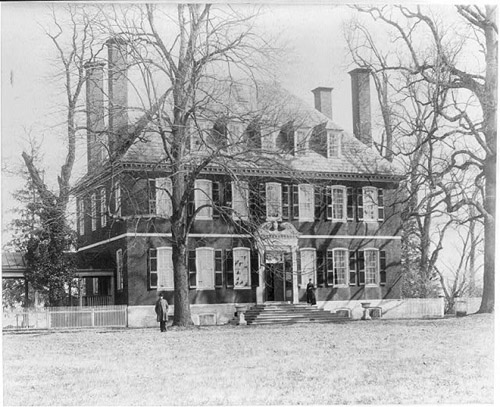
By 1880, Walter Watson had arrived in Danville and was renting rooms on Main Street. He identified himself on the census of that year as a Tobacconist. In 1884 he married Lavinna Seldon whose father, Archibald Seldon owned Westover Plantation in Charles City, Virginia. Westover was built by William Byrd in 1730, the same Byrd who, quite literally, put Danville on the map during his expedition to establish the boundary between Virginia and North Carolina in 1728.
In December of 1910, the Watsons sold their home, possibly due to financial strain, and took rooms in the double house at 116 Holbrook Avenue.
Mr. Watson was associated with J.E. Perkinson Tobacco when, on January 6, 1915 he left his factory for the last time. He had announced to his partner and subordinates that he was going out to view some tobacco samples in a nearby warehouse. Instead, he went home, where his wife and a maid were in the kitchen. Mrs. Watson, surprised to see him, was informed that he had simply left something behind that he needed at work, after which he went up to the bathroom and shot himself in the head with a revolver he had purchased for the purpose.
After the Watsons sold the property in 1910, the home was purchased by Ruth H. Simms who, with her husband, owned the home until January of 1920. It’s unclear whether they lived there, but, for a time in the late teens, Johnny Westbrook rented the home, until he, too, relocated to an apartment at 116 Holbrook Avenue.
The new owners in 1920 were Charles Crenshaw Crews and his wife Martha Caroline Woolfolk Crews.
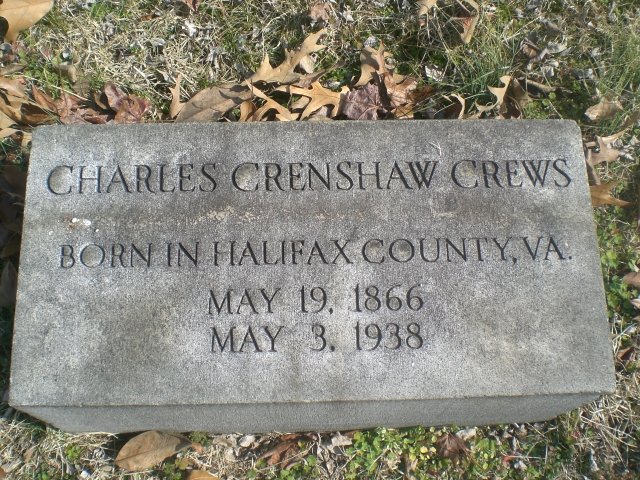 Charles Crews (half brother to Beverly Sydnor Crews of 806 Main Street) was born at Belmont, in Halifax County, to John Bullock Crews and Louisa Jane Frances Barksdale Crews. He came to Danville as a youth of sixteen and engaged in the wholesale grocery business, eventually forming the partnership of Cob and Crews. In 1930, he retired, and eight years later he died from a longstanding heart condition. Mrs. Crews remained in the home. Callie, as she was called, was born in Troy, Missouri to Richard Oscar and Mary Ann Bullock Sydnor Woolfolk.
Charles Crews (half brother to Beverly Sydnor Crews of 806 Main Street) was born at Belmont, in Halifax County, to John Bullock Crews and Louisa Jane Frances Barksdale Crews. He came to Danville as a youth of sixteen and engaged in the wholesale grocery business, eventually forming the partnership of Cob and Crews. In 1930, he retired, and eight years later he died from a longstanding heart condition. Mrs. Crews remained in the home. Callie, as she was called, was born in Troy, Missouri to Richard Oscar and Mary Ann Bullock Sydnor Woolfolk.
The Crews family shared their large home with their adult children. Charlotte was a grade school teacher and later a librarian. Her husband, William Hull was a civil engineer who specialized in the design and construction of bridges. Another daughter, Helen, lived there as well with her young son.
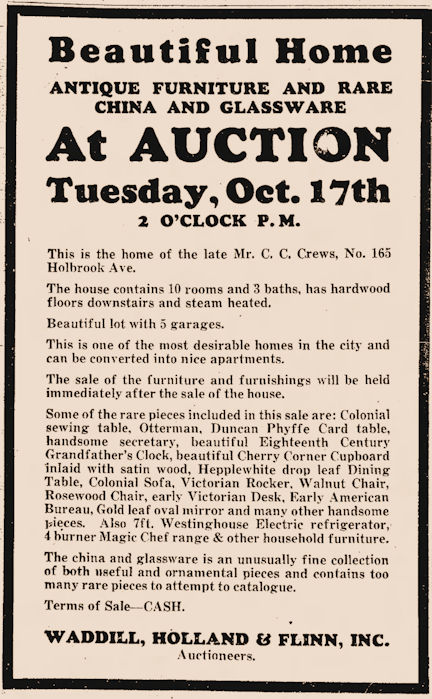 In 1944, the house went up for auction. The announcement in the paper in October of that year suggested the large home might be converted into “nice apartments”, and that is precisely what happened. For the next fifty years, the home would serve as rental property. From 1945 until the mid 80’s, the house served as a nurse’s home for nurses at Memorial Hospital and was even the headquarters of the Memorial Alumni Association.
In 1944, the house went up for auction. The announcement in the paper in October of that year suggested the large home might be converted into “nice apartments”, and that is precisely what happened. For the next fifty years, the home would serve as rental property. From 1945 until the mid 80’s, the house served as a nurse’s home for nurses at Memorial Hospital and was even the headquarters of the Memorial Alumni Association.
More recently the house was purchased by Mike Spangler who is working to co complete its restoration as a single-family residence.
Sources:
Census and Vital records found at Familysearch.org
Images and vital information, including biographical sketches found at FindaGrave.com
Death notices and other information found in the Danville Register, Danville Bee archives at Newspapers.com
Census, Directory, Newspaper, and other information compiled by Paul Liepe
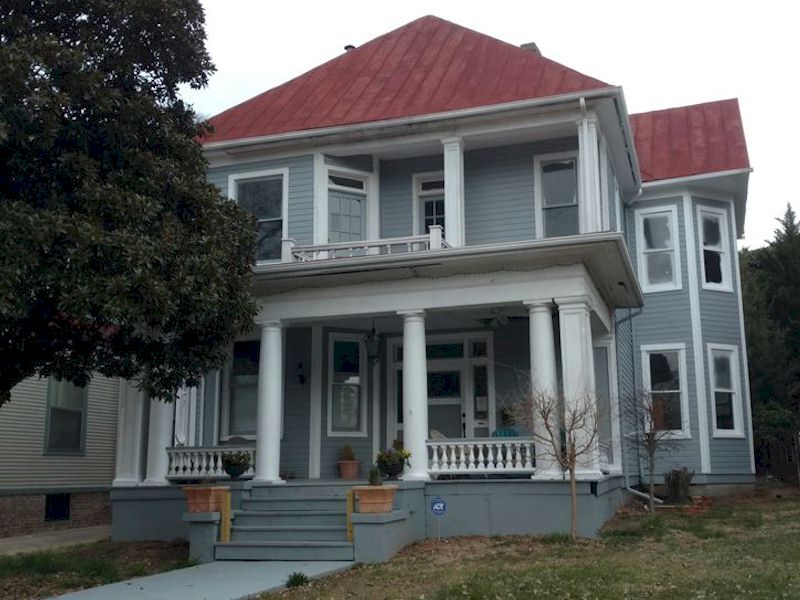
How interesting to read this history. Thanks,